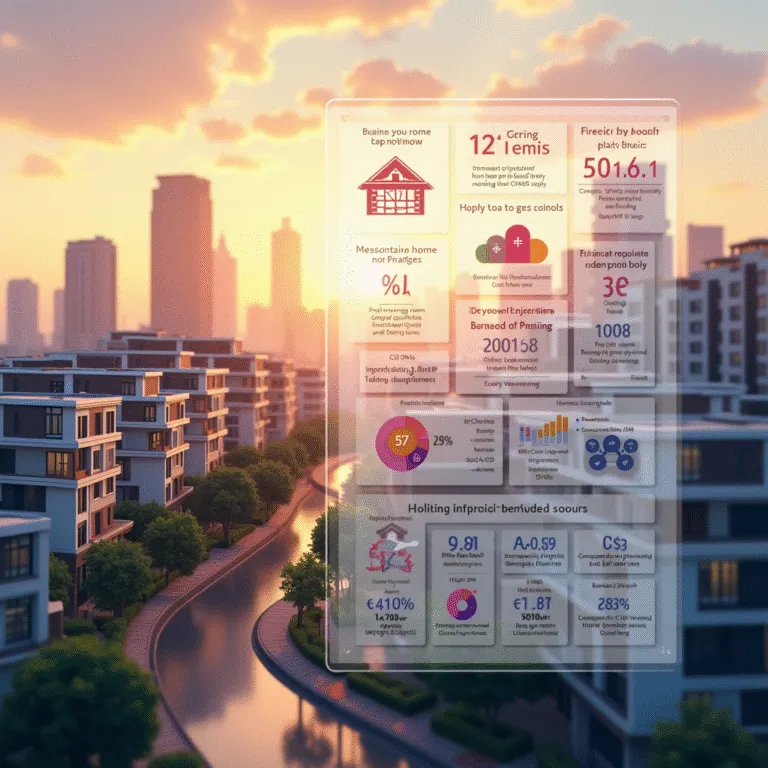CPF Retirement Planning 2025: What Singaporeans in Their 40s Must Know (with Surprising Polls and Real-Life Tactics)
Let’s be honest—when was the last time you read a riveting article about CPF retirement planning? Probably never. But tonight, Howard brings us into a relatable, slightly chaotic journey: he confesses CPF schemes once left him bamboozled too! For anyone in their 40s just starting to think about retirement—or feeling like they’re the last to the planning party—this post is for you. Spoiler: Real human quirks, poll surprises, and even a coffee shop debate about kopi vs. lattes await.
CPF Sums & Real-Life Goals: Poll Surprises, Latte Dreams, and the Power of the Full Retirement Sum
CPF’s 2025 Retirement Sums: BRS, FRS, ERS—What’s the Real-Life Impact?
When it comes to CPF retirement planning 2025, Singaporeans in their 40s are facing a new reality: the official retirement sums have never been higher, and expectations are rising even faster. For 2025, the Basic Retirement Sum (BRS), Full Retirement Sum (FRS), and Enhanced Retirement Sum (ERS) are as follows:
| CPF Retirement Sum | 2025 Amount |
|---|---|
| Basic Retirement Sum (BRS) | $106,500 |
| Full Retirement Sum (FRS) | $213,000 |
| Enhanced Retirement Sum (ERS) | $426,000 |
These sums are more than just numbers—they’re the foundation for your monthly payouts under CPF LIFE, and they reflect the cost of living, inflation, and the lifestyle you want in retirement. The Full Retirement Sum 2025 is the default target for most, but many are aiming even higher.
Latest Poll: 83% Want $400,000+ in CPF for Retirement
In a recent poll of Singaporeans planning for retirement, the results were eye-opening. A whopping 83% of respondents said they want at least $400,000 in CPF savings for retirement, with 60% targeting $600,000 or more. This is far above the official FRS or even ERS. Why the big jump?
- Rising cost of living and healthcare
- Desire for more comfortable, flexible lifestyles
- Longer life expectancy—payouts need to last
Clearly, Singaporeans are no longer just planning to “get by”—they want security and the freedom to enjoy their golden years.
Why $300/Month from the Old Minimum Sum (1987) Barely Buys Kopi Now
To understand why expectations have shifted, look at the history. When the minimum sum was first introduced in 1987, it was just $30,000. That would give you about $300 a month in retirement payouts. As one speaker put it:
I think $300 a month is clearly insufficient for current living expenses.
Fast forward to 2025, and $300 barely covers a month’s kopi o and hawker meals—let alone medical bills, utilities, or a little travel. The impact of inflation on retirement is real, and it’s why CPF sums are reviewed and increased regularly. The goal: ensure your payouts remain meaningful, not just token amounts.
Howard’s Latte vs. Kopi Moment: Why Living Standards Matter
Retirement isn’t just about survival—it’s about quality of life. Howard, a typical Singaporean in his 40s, shared his “latte vs. kopi” moment. He realised that while kopi o from the coffee shop is affordable, sometimes you just want to sit in a café and enjoy a latte. As he put it:
It’s not just about getting by – sometimes, it’s about enjoying that latte instead of kopi o.
This simple comparison highlights a bigger truth: your CPF payout range should match your lifestyle goals. Whether you dream of travel, hobbies, or just more comfort, your retirement sum target should reflect that.
Choose Your Payout Tier—No Shame in Dreaming Big or Living Lean
CPF offers flexibility. At age 55, your Retirement Account (RA) is created. Your Special Account (SA) and, if needed, Ordinary Account (OA) savings are transferred to meet your chosen sum—BRS, FRS, or ERS. Here’s what it means:
- BRS: Basic payouts, suitable if you have other sources of income or own your home
- FRS: Standard payouts, the default for most Singaporeans
- ERS: Higher payouts, for those who want more comfort and can top up
And if you don’t hit the FRS? There’s no penalty—just lower monthly payouts. You can still withdraw up to $5,000 from age 55, and any excess above your chosen sum. The key is to align your CPF strategy with your real-life goals.
| Poll Results | Percentage |
|---|---|
| Want $400,000+ CPF savings | 83% |
| Target $600,000+ CPF savings | 60% |
| 1987 Minimum Sum | $30,000 (~$300/month payout) |
Ultimately, CPF retirement planning 2025 is about more than numbers. It’s about matching your CPF payout range to the retirement lifestyle you want—whether that’s kopi o, latte, or something in between.

Retiring With or Without a Plan: CPF Withdrawal at 55, Surprising Flexibility, and the Myth of ‘Must Top Up’
For many Singaporeans in their 40s, the idea of CPF retirement planning can feel intimidating—especially with all the talk about the Full Retirement Sum (FRS) and withdrawal rules. But the truth is, the CPF system offers far more flexibility than most people realise. Whether you’re a meticulous planner or someone who prefers to “wing it,” CPF withdrawal rules at age 55 are designed to accommodate a range of retirement attitudes and lifestyles.
CPF Withdrawal Rules at 55: Not a Hard Stop
Turning 55 is a key milestone in the CPF journey. At this age, your Retirement Account (RA) is created automatically. Here’s how the process works:
- Retirement Account transfer: Savings from your Special Account (SA) are first transferred to your RA, up to the FRS. If your SA isn’t enough, your Ordinary Account (OA) tops up the difference.
- Minimum withdrawal: At 55, you can withdraw up to $5,000 from your CPF, regardless of whether you have met the Basic Retirement Sum (BRS) or FRS. If your combined OA and SA balances exceed the FRS (set at $213,000 for those turning 55 in 2025), you can withdraw any amount above the FRS as well.
- No compulsion to top up: If you don’t have enough to meet the FRS, there’s no requirement to top up your RA. As one CPF expert put it:
“It is not compulsory to top up your RA to meet the retirement sum at age 55.”
This means 55 isn’t a hard stop. You can withdraw your CPF savings—partially or fully—as needs arise, and as often as you like, subject to the minimum withdrawal rules. For some, CPF becomes a flexible rainy day fund, not just a retirement income source.
Myth-Busting: The ‘Must Top Up’ Misconception
Many Singaporeans believe that failing to hit the FRS at 55 means they must scramble to top up their RA. This is simply not true. If you don’t meet the FRS, you’re not penalised. Your monthly payouts will simply be lower, scaled according to what you have set aside. The CPF system is designed to support, not punish, those with different savings journeys.
For example:
- If you have at least $60,000 in your CPF at age 65, you’ll be automatically enrolled in CPF LIFE, which pays you a monthly income for life.
- If you have less than the FRS, you still receive payouts—just at a lower rate. No top-up is required.
Polls from recent CPF talks show that this flexibility is valued: while 83% of attendees aim for $400,000 or more in CPF savings by retirement, a surprising 10% say they never want to retire at all. As one attendee shared,
“Some people never want to retire. My parents are the same—they just keep going!”
CPF as a Rainy Day Fund or Flexible Income Source
Not everyone treats CPF as their main retirement income. Some see it as a backup fund for emergencies, while others plan to withdraw only what they need, when they need it. The CPF withdrawal rules at age 55 allow for this flexibility:
- Withdraw as little as $5,000 or as much as your balance above the FRS.
- Make withdrawals as frequently as you like, subject to CPF’s conditions.
- If you don’t need the money immediately, you can leave it in your RA to earn attractive long-term interest rates, boosting your future payouts.
For those who want higher monthly payouts, voluntary top-ups to the Enhanced Retirement Sum (ERS)—set at $426,000 in 2025—are allowed anytime after 55. But again, this is optional, not compulsory.
Key Takeaways on CPF Retirement Account Flexibility
- At 55, your RA is created via transfers from SA and OA up to the FRS.
- No need to top up to FRS—withdrawals and payouts simply scale to your balance.
- CPF can be a flexible emergency fund or a long-term income stream, not a rigid system.
- Retirement is personal: whether you want to stop work at 65, never retire, or use CPF as a backup, the system supports your choice.

Mixing Bricks, Bonds, and Beans: Property Schemes, Interest Perks, and Uncommon CPF Hacks for 2025
As Singaporeans in their 40s look ahead to CPF retirement planning in 2025, the smartest strategies blend property, high-interest CPF accounts, and clever top-ups. With the CPF Special Account closure for those aged 55 and above from January 2025, it’s more important than ever to understand how to maximise every dollar—whether it’s locked in bricks, bonds, or beans (your daily coffee budget!).
Property as a Retirement Boost: Lease Buyback, Silver Housing Bonus, and Right-Sizing
For many, the family home is more than just shelter—it’s a powerful retirement asset. Ideally, your home should be fully paid off before you retire, freeing you from mortgage worries and the stress of fluctuating interest rates. But what if you need extra cash to supplement your CPF LIFE monthly payouts? That’s where property monetisation schemes come in.
The Lease Buyback Scheme lets you sell the tail end of your HDB flat’s lease back to the government, unlocking a lump sum that goes straight into your CPF Retirement Account (RA). This boosts your CPF LIFE payouts, giving you more to spend on daily needs or that occasional kopi siew dai treat. If you’re considering downsizing, the Silver Housing Bonus rewards you for right-sizing to a smaller flat, with a cash bonus for topping up your CPF RA. These schemes are designed to help retirees turn their home equity into a steady income stream—without leaving their beloved neighbourhoods.
Interest Rates That Surprise: Up to 6% Per Annum After 55
One of the most underrated CPF retirement planning 2025 hacks is understanding the unique interest structure of CPF accounts. Before age 55, your Ordinary Account (OA) earns 2.5% per annum, while your Special Account (SA) and Medisave Account (MA) both earn 4%. But here’s where it gets interesting: the government gives an extra 1% on the first $60,000 of your combined CPF balances (capped at $20,000 for OA), making your effective interest even higher.
Once you hit 55, things get even sweeter. Your Retirement Account (RA) is created, and you start earning 4% per annum there. On top of that, you enjoy an extra 2% on the first $30,000 and an extra 1% on the next $30,000 of your combined CPF balances. That means you can effectively earn up to 6% per annum on your first $30,000 after age 55. As one retiree put it,
‘You can effectively earn up to 6%… That’s a rare deal for any savings account!’
With these rates, keeping your funds in CPF is like having a triple shot latte—rich, strong, and hard to beat for risk-free returns.
Maximise with Voluntary (Tax-Relieved!) Top-Ups—Move Beyond the Basics
Voluntary top-ups to your CPF SA or RA aren’t just about forced savings. They’re a strategic move to boost your retirement funds and enjoy tax relief at the same time. Every dollar you top up (up to the prevailing limits) not only compounds at attractive CPF interest rates, but also reduces your taxable income. For those planning ahead, this is like choosing between a kopi siew dai (less sugar, more savings) and a triple shot latte (going all out for maximum impact).
With the CPF Special Account closure for those 55 and above in 2025, all SA balances will be transferred to your RA up to the Full Retirement Sum (FRS). For 2025, the Enhanced Retirement Sum (ERS) is set at $426,000. If you have less than the Basic Retirement Sum, you can still withdraw up to $5,000 at age 55, and any excess above the FRS is yours to withdraw or leave in CPF for continued high interest.
Conclusion: Stirring Up Your CPF Recipe for 2025
CPF retirement planning in 2025 is all about mixing the right ingredients: leveraging property schemes like Lease Buyback and Silver Housing Bonus, maximising risk-free CPF interest rates, and using voluntary top-ups for both tax relief and bigger CPF LIFE monthly payouts. With the closure of the Special Account for seniors, it’s more crucial than ever to plan ahead and make every dollar work harder. Whether you prefer your retirement planning like a simple kopi or a luxurious triple shot latte, the key is to start early, stay informed, and blend your strategies for a richer, more secure retirement. After all, the best retirement isn’t just about having enough—it’s about having choices, comfort, and the freedom to enjoy life’s little pleasures, one cup at a time.
TL;DR: CPF retirement planning in 2025 is more flexible (and, yes, baffling) than ever: interest rates are up, new withdrawal rules are in, and your desired lifestyle matters more than hitting someone’s idea of the ‘perfect’ sum. From leveraging your housing to quirky poll results, there’s no one-size-fits-all way to retire happily – only smarter, more personal strategies.







